53808: Restoration – from BR service to 30 years with the Trust
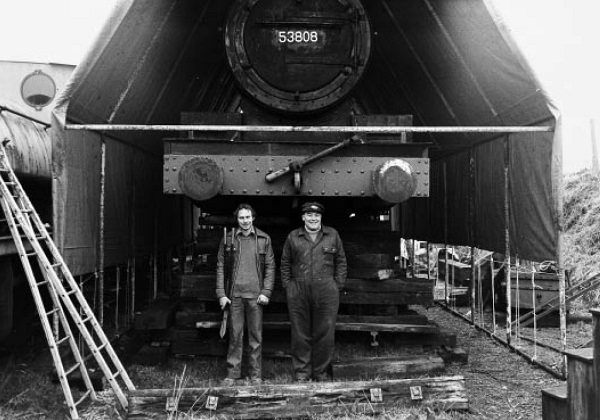
Photo above: Richard Lock and the late Mike Palmer under the tent covering 53808 at Washford during the early days of the restoration. The Trust’s Peckett Kilmersdon can just be seen on the left.
The article below is reproduced from Pines Express issue 286, Autumn 2017, and describes how 53808 was rescued by the Trust and subsequently restored.
You may also like to see these pages: Latest photos. 53808’s history. How the S&D 7Fs came into being. The Return to Steam in 1987.
53808: from BR service to 30 years with the Trust – by Roger Hardingham
We are all very lucky indeed in being able to celebrate No. 53808’s 30th year in steam at the West Somerset Railway. Without the existence of a certain scrap merchant in South Wales, we would not today have any ex-S&D 7F locomotives. One of the miracles of Dai Woodham’s scrapyard at Barry in South Glamorgan was that several locomotive types were added to the UK’s preserved list of standard gauge engines. Two of these are Nos. 53808 and 53809. Had it not been for the miracle of Barry we simply would not have them to see and enjoy today.
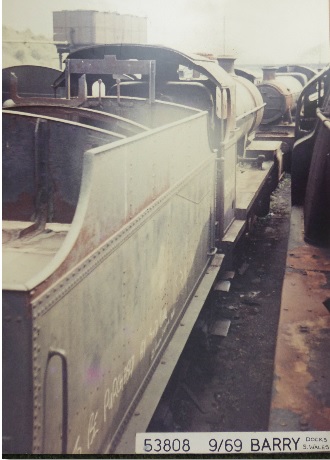
Above, 53808 at Woodham’s scrapyard, BarryIsland, in September 1969, surrounded by other steam locomotives including ex-GWR and SR classes. Written on the tender are the words ‘Purchased by S&D Circle’. [Photo by C Schofield/S&DRT collection]
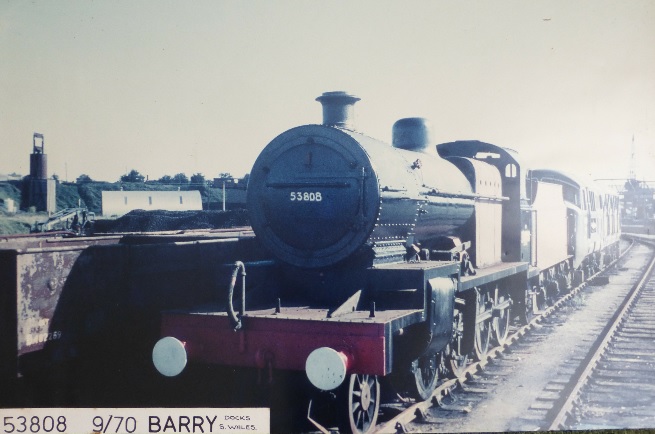
53808 at Barry in September 1970, by which time some attention to the paintwork is apparent. [Photo by C Schofield/S&DRT collection]
The key to the survival of these rare engines at Barry was that from August 1965 Woodham’s ceased routine locomotive scrapping. Contracts to scrap the thousands of withdrawn mineral wagons had gained momentum and so the locomotives were generally left to one side for, in Dai Woodham’s words, “a rainy day”. In 1968, steam on British Rail came to an end. Just one month following the fifteen guinea special of 11 August from Liverpool to Carlisle, the first locomotive departed from Barry for pastures new. This engine was LMS 4F No. 43924 which had been withdrawn from Bristol Barrow Road in 1965 and just three years later made its way to Haworth on the Keighley & Worth Valley Railway. This would start an exodus from Barry which would continue right up to 1990 with a magnificent final total of 213 locomotives escaping the cutting torches.
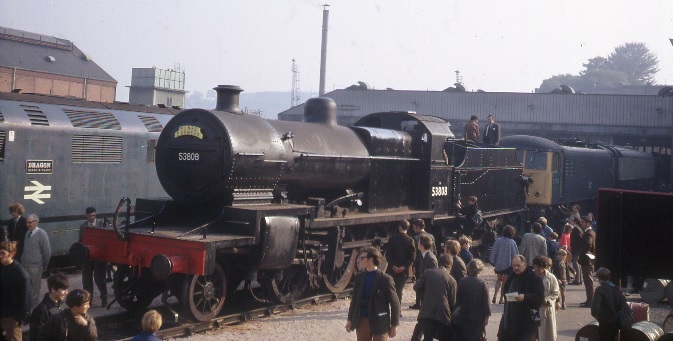
On the journey from Gloucester (ex-Barry) to Radstock, 53808 stopped off at the Bristol Bath Road Motive Power Depot open day on 17 October 1970. Also visible is Warship class Diesel-Hydraulic No. D814 ‘Dragon’. [Photo by Anon/S&DRT collection; WSHSD_2015_003]
No. 53808 was recognised quickly as being a rare example that could not be allowed to be missed and this is where the S&D Circle (now the S&DRT) stepped in. With the Bath to Bournemouth line closing in March 1966, attempts were soon started to try and preserve a part of the system. Radstock North was chosen as a potential base and as history tells us, the Circle established themselves in the former depot and station there by the late 1960s under a yearly rental agreement with BR. By October 1970 an agreement had been reached with Dai Woodham to purchase No. 53808 for £2,500, but by monthly instalments, something which was quite unusual for Dai as he would normally insist on full payment up front before it departed!
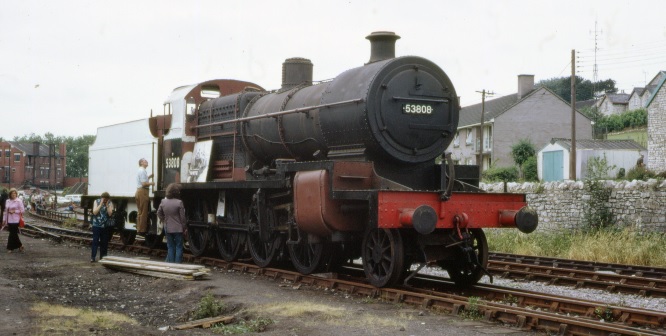
53808 at Radstock – photographed during the Trust’s open day on 16 July 1974. Note the white primer. [Photo by Terry Harris; WSHSD_2016_32_5]
Restoration images below.
You may also be interested in: 53808’s Return to Steam.
Here are some images of the restoration, as featured in Pines Express issue 286.
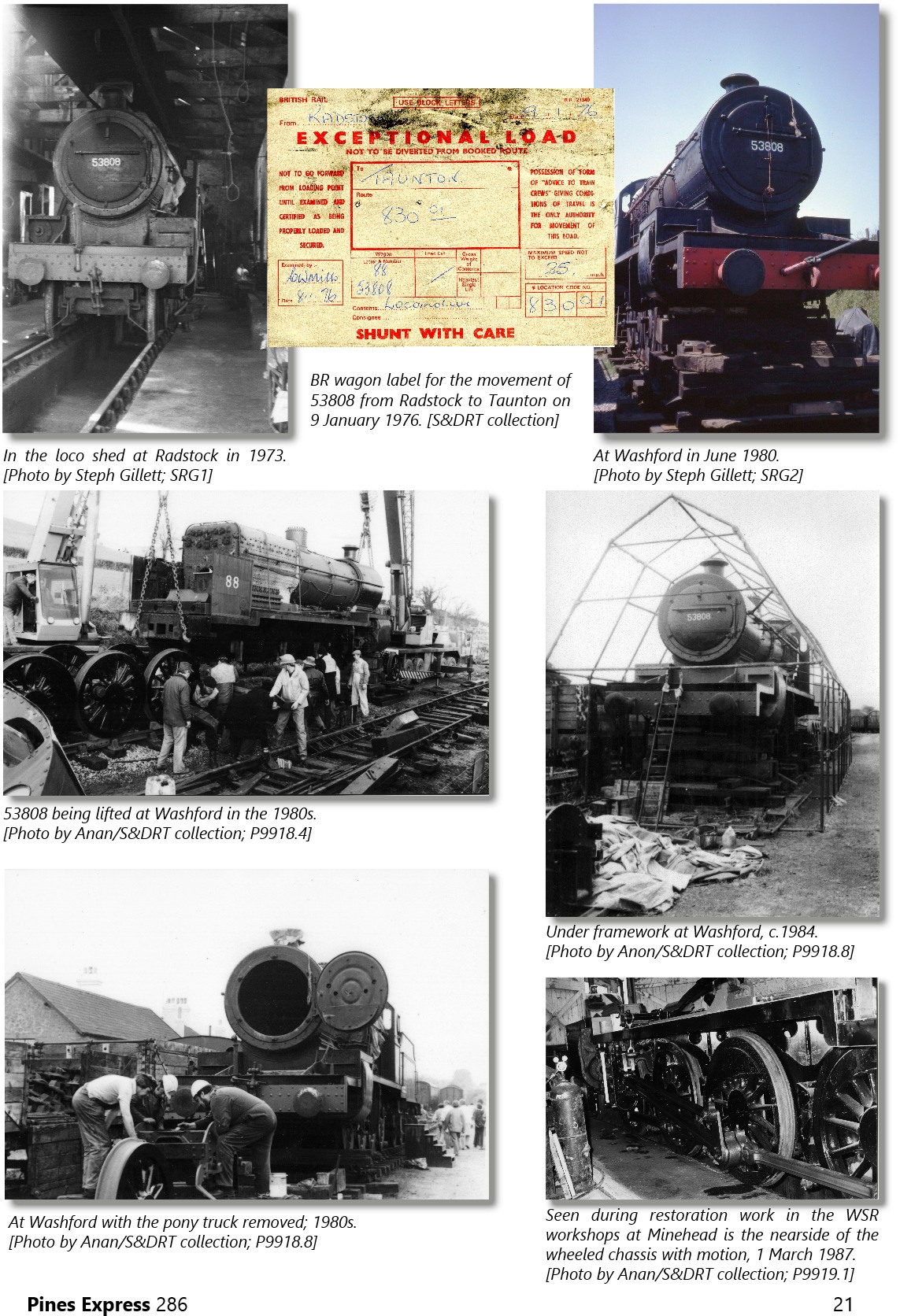
See also The Return to Steam in 1987.
